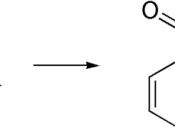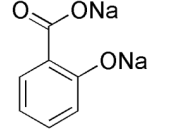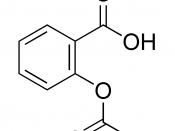The objectives of this experiment are to conduct the preparation of simple organic compound (aspirin), perform recrystallisation to purify the compound using normal filtration and reinforce the skill of determinating melting point of recrystallised compound.
In order to prepare acetylsalicylic acid (aspirin), salicylic acid is firstly weighed and acetic anhydride is followed to be added. It is then mixed with a few drops of concentrated sulphuric acid. The mixture is heated until it has completely reacted. After that, distilled water is cautiously added when it is still hot. Additional cold water is then added and the mixture is stirred and rubbed. Suction filtration is carried out to collect the product.
The crude product is to be recrystallised and is done by dissolving it in ethanol and hot water. After the solution is cooled, the crystals are filtered and dried in the oven. They are then transferred to a desiccator to cool.
The expected yield and percentage yield of the recrystallised aspirin can be calculated after the crystals are weighed. Lastly, melting point is determined to check if the aspirin obtained is pure enough.
From the experiment, the weight of dry recrystallised aspirin is 1.13 g while the percent yield is 36.29% yield. The temperature range of its melting point is 138.2úC - 141.4úC. The theoretical melting point is said to be 140úC. Thus, it shows that there are still some impurities in the aspirin obtained and the reasons might be due to some errors made.
2.IntroductionAspirin, or also known as acetylsalicylic acid is commonly used as antipyretic to reduce fever, as analgesic to relieve pains and aches, and also used for anti-inflammatory medication to reduce swelling, soreness and redness. Its "anti-clotting" effect can also treat or prevent heart attacks, strokes and angina.
Aspirin was first originated around 400 B.C...


